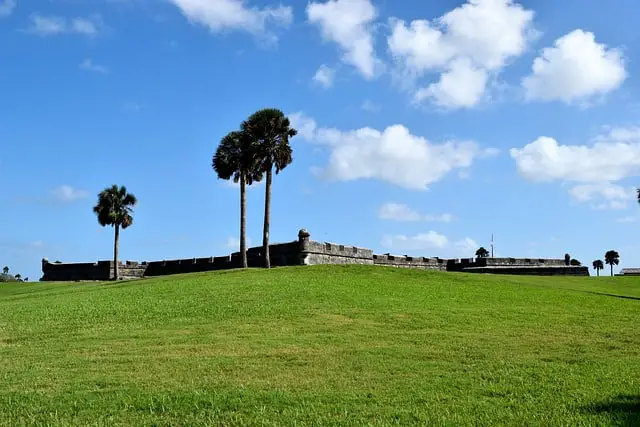When given proper care and attention, the St. Augustine grass looks and feels like an exquisite deep-green rug. Apart from its appearance, St. Augustine grass can also withstand heat and other harsh conditions.
Due to its unique characteristic, this rug-like grass has gained the attention of many property owners. But did you know that there are weeds that look like St Augustine grass? So, in a situation where you can’t find St. Augustine grass in your region, you can go for its look-alike.
In this article, we will discuss 5 weeds similar to St. Augustine grass that you should watch out for on the lawn. Read on to find them out!
Weeds That Look Like St Augustine Grass
Other popular posts in a similar category:
- Weeds That Look Like Clover With Yellow Flowers
- Plants That Look Like Cucumbers
- Weeds That Look Like Elderberry
- Plants That Look Like Tomato Plants
1. Centipede Grass (Eremochloa ophiuroides)
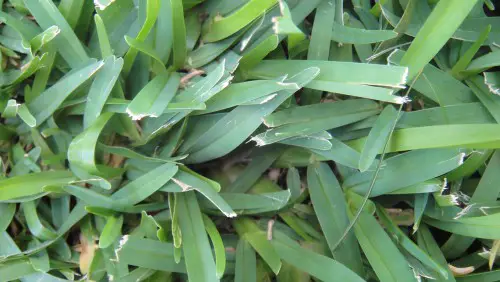
Sometimes, homeowners confuse centipede grass with St. Augustine grass due to their similarities. Apart from being low-growing, both types of grass have the same blade shapes.
Although it is native to southern China, centipede grass is a popular grass in the southeastern United States. Also considered a weed, centipede grass is commonly grown as lawn grass. This weed can be identified by its coarse texture, the stem of about 3 – 5 inches, and light green color.
Despite being a low-maintenance grass, centipede grass thrives in acidic and sandy soils. Moreover, it doesn’t require constant mowing. But the grass cannot tolerate drought and can only survive in mild climates.
2. Tall Fescue Grass (Festuca arundinacea)
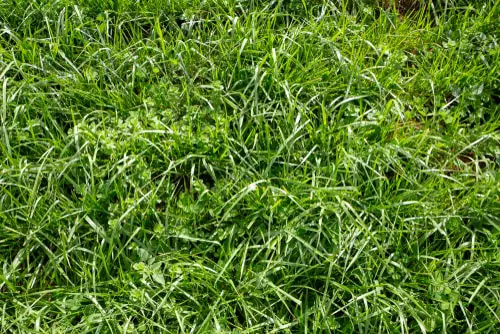
Another grass that shares a resemblance to St. Augustine grass is the tall fescue grass. In addition to having the same broad blades with a coarse texture, both blades of grass have the same dark green color. But the tall fescue leaf blades are slightly thicker than those of St. Augustine grass.
Tall fescue is native to Europe and is often grown as an ornamental grass in lawns. New cultivars of tall fescue grass can tolerate drought, heat, and diseases. Under normal conditions, tall fescue can reach about 2–3 feet.
Generally, the grass will not grow well in temperatures below 40 degrees Fahrenheit. And it also requires regular mowing due to its fast growth habit.
3. Zoysia Grass (Zoysia)
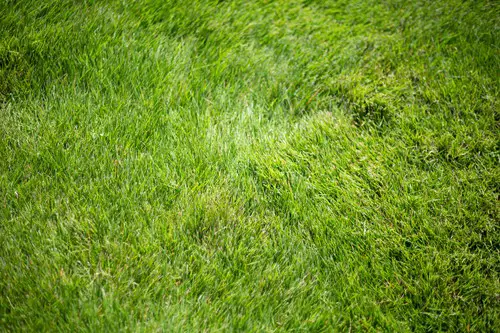
Among property owners, zoysia grass is sometimes used as an alternative to St. Augustine grass because of its similarities. Zoysia grass, like St. Augustine grass has a smooth texture, and is easy to maintain.
Native to Japan and Korea, this turf grass doesn’t require a lot of fertilizer to grow well.
A preferable choice at golf courses and parks, Zoysia grass feels soft to the touch and has a fine texture. That’s not all; the grass can withstand foot traffic and tolerate drought.
When the conditions are favorable, this dense grass can grow to about 4–6 inches tall.
Even though Zoysia is a warm-weather grass, it can survive in cold climates. Grow this lush, low-maintenance grass in late spring to early summer to get the best results.
4. Bermuda Grass (Cynodon dactylon)
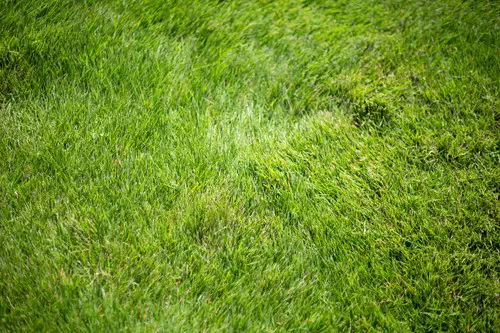
When you look at Bermuda grass and St. Augustine grass from afar, it can be hard to tell the difference between the two kinds of grass. Not only do they both have broad and coarse leaf blades, but Bermuda and St. Augustine grass has the same deep green color.
Bermuda grass is native to Africa, Australia, Europe, and some parts of Asia. However, this grass has become popular in many parts of the world.
In addition to its ability to tolerate heat and drought, this perennial grass can also withstand foot traffic and salt. It’s no wonder why Bermuda grass is popular on sports fields, including golf courses.
Being a warm-season grass, Bermuda requires bright, direct sunlight and good drainage to survive.
5. Carpetgrass (Axonopus fissifolius)
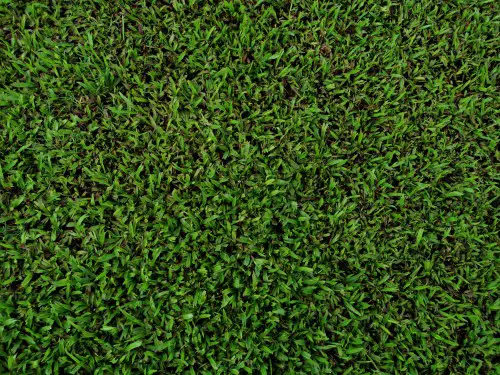
Carpetgrass is another weed that looks like St. Augustine grass. Sometimes, people confuse one grass with the other because they are identical in many ways.
But unlike St. Augustine grass, carpet grass is not a popular choice among homeowners because it doesn’t grow uniformly on the lawn. Moreover, the grass cannot tolerate cold or traffic.
Further, carpetgrass cannot tolerate drought because its roots are shallow.
During the cold season, the grass changes to brown and takes a lot of time before turning green in the spring. It is also susceptible to pest and disease attacks.
When considering a high-quality lawn, carpet grass is not the best choice. But if you want to grow this grass in your home, create a weekly mowing schedule to maintain its appearance.
Final Thoughts
Having weeds that look like St. Augustine grass on the lawn should not be a cause for concern for homeowners. Most of the time, the grass listed in this article creates the same impressive sight as St. Augustine grass.
If you’ve decided to grow any of these grass in your environment, first find out their requirements. Keep in mind that constant maintenance is important if you want the grass to flourish.
Frequently Asked Questions
What is a Good Grass to Mix with St. Augustine?
One of the good grasses to mix with St. Augustine grass is Bermuda grass. Both kinds of grass make a wonderful and appealing combination on your lawn.
Compared to St. Augustine grass, Bermuda grass is aggressive, depending on the weather conditions. Hence, Bermuda grass can sometimes grow out of control on your lawn if care is not taken.
Proper maintenance and balance of both types of grass are important to give your lawn the desired look and protection.
Should You Water St. Augustine Grass Every Day?
No, it’s not necessary to water St. Augustine grass every day. Watering the grass every 2 to 3 times weekly is enough, depending on whether the soil can hold much moisture or not. In other words, sandy soil or clay soil will require frequent watering.
Also, try to observe the color of your St. Augustine lawn to determine whether to water it or not. When the color changes from dark green to gray-blue, then the grass needs watering.
What Happens If You Over-Fertilize St. Augustine Grass?
Over-fertilizing your St. Augustine grass, especially with fertilizers with high nitrogen content, can burn its leaves. Signs of fertilizer burn on your lawn include root damage and leaf discoloration.
As you know, a brown or yellow lawn creates an unsightly view of the environment. Therefore, it is important to create a schedule when planning to fertilize your St. Augustine grass. Give your lawn lots of water to wash the excess fertilizer away.

Hey, I’m Lisa and I’ve been an avid gardener for over 30 years. I love writing, talking and living in the garden! Feel free to connect with me on my socials below

